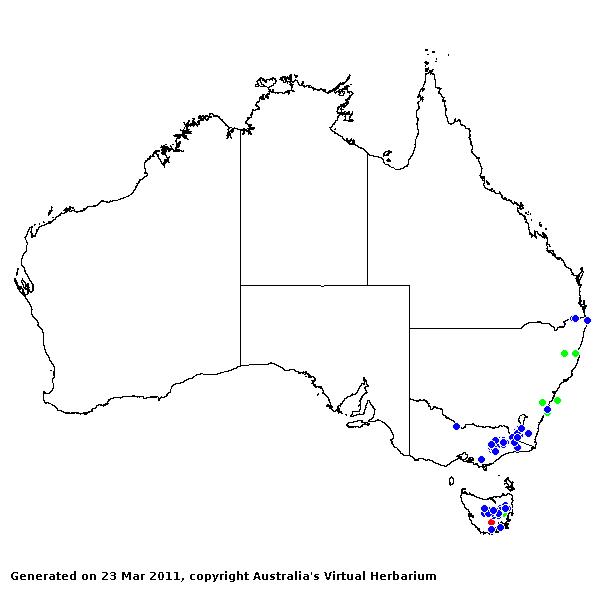Trisetum* Syn. Pl. 1: 97 (1805).
Derivation:. From Latin tri (three) and seta (bristle), referring to the 3 awns of the lemmas.
Taxonomic revisions, nomenclatural references:. E.Hulten, Svenk Bot. Tid, Utvn. Svenk. Bot. For. 53: 203–228 (1959).
Key references (keys and floras):. G.Bentham, Flora Australiensis 7: 587–588 (1878); C.A.Gardner, Flora of Western Australia 1 Gramineae 60–62 (1952); E.E.Henty, Manual Grasses New Guinea 189 (1969); J.C.Tothill and J.B.Hacker, Grasses of Southern Qld 420–421 (1983); B.K.Simon, Key to Australian Grasses 174 (1993); S.W.L.Jacobs and K.L.McClay, Flora of New South Wales 4: 590–591 (1993); N.G. Walsh, Flora Victoria 2: 452–453 (1994); D.I.Morris, Student's Flora of Tasmania 4B: 239–240 (1994); E.Edgar and H.E.Connor, Flora of New Zealand 5: 323–338 (2000); D.Sharp and B.K.Simon, AusGrass (2002); S.W.L.Jacobs, R.D.B.Whalley & D.J.B.Wheeler, Grasses of New South Wales, 4th ed, 390–391 (2008); A.Wilson (ed.), Flora of Australia 44A: Poaceae 2: 160–163 (2009).
W.D.Clayton & S.A.Renvoize, Genera Graminum (1986), genus (178).
Native. About 85 species, from north and south temperate regions. 2 species in Australia, Qld, NSW, Vic, and Tas. Also New Guinea, Malesia and New Zealand.
Habit. Annual or perennial, rhizomatous or tufted. Leaf blades narrow. Ligule an unfringed membrane (sometimes puberulent or ciliolate).
Inflorescence. Inflorescence paniculate, a spike-like panicle, open or contracted.
Spikelets. Spikelets laterally compressed, more than 2 flowered to 2 flowered, with 2 or more fertile florets, solitary, pedicelled; with naked rachilla extension. Fertile spikelets disarticulating above glumes or falling with glumes or not disarticulating.
Glumes. Glumes unequal to more or less equal, shorter than spikelet or about equal to spikelet, shorter than adjacent lemmas or long relative to adjacent lemmas, pointed (acute or acuminate), awnless, keeled, similar. Lower glume 1–3 nerved. Upper glume 1–5 nerved.
Florets. Fertile florets (1–)2–5(–12). Lemmas similar in texture to glumes, not becoming indurated, incised, usually conspicuously awned, 5 nerved, glabrous, 1 keeled. Awns when present 1 or 3, the median different in form from laterals (when laterals present), dorsal (or subterminal), non-geniculate (curved) or geniculate, much shorter than body of lemma to much longer than body of lemma. Lateral awns when present, shorter than median. Palea relatively long, gaping, with apical setae (the two nerves ending as bristle tips), thinner than lemma, 2 nerved. Callus short. Lodicules 2. Stamens 3. Grain small or medium sized, dull, slightly compressed laterally. Hilum short. Embryo small.
Kranz Anatomy. C3.
2n = 12, 14, 24, 28, 42, and 56, 2, 4, 6, and 8 ploid, commonly adventive.
Habitat. Mesophytic, xerophytic. Meadows, mountain slopes, upland grasslands, weedy places. Mostly species of open habitats.
Classification. Pooideae; Poeae.
Types Species. T. striatum (Lam.) Pers.
Biogeographic Element. Clifford & Simon 1981, Simon & Jacobs 1990: Naturalised.


